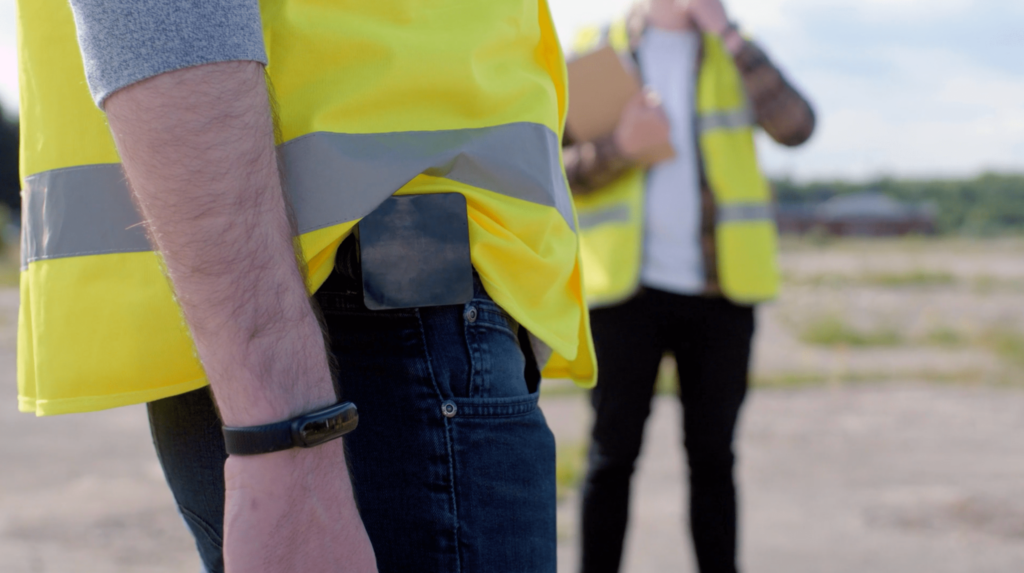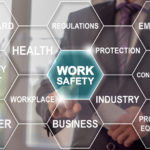Sector - Health & Safety
Tech that Can Get Construction to Work Safely

In this latest feature for Construction Online, Tended CEO and Founder Leo Scott-Smith writes about how the construction industry can use technology to make the workplace safer for everyone.
Working in construction is dangerous and that’s due to the nature of the work. As a sector, construction has a fatal injury rate four times greater than the all-industry rate. Since the start of 2019 to the 31st March of this year there were 40 fatal injuries to construction workers at work recorded, a 22% leap compared with previous years’ figures.
Those who work in construction know the dangers their working environment can have on their lives. Whether it’s falling from height or being injured by a vehicle, there are health hazards littered throughout construction sites. The latest figures from the Health & Safety Executive show the three most common causes of fatal injuries at work continue to be workers falling from height (40), being struck by a moving vehicle (30) and struck by a moving object (16). As companies tried to guard against the common threats to their worker’s life, March 2020 brought the construction industry a new health hazard to deal with – Covid-19.
Coronavirus has affected the construction industry in many different ways, from temporary site closures to supply chain disruptions and operational restrictions, leading to projects becoming more expensive and complex. Between the months of March to June a worrying 89 UK construction companies have gone into administration, in the short term, reporting significant reductions in revenue.
The stats and headlines show that coronavirus is hitting construction companies hard, but what most people are unaware of is the impact it’s had on the health of those who work in it, especially amongst low-skilled construction workers. After analysing recent data from the Office of National Statistics (ONS), Yorkshire Brickwork Contractors (YBC) found that construction has a higher rate of deaths related to Covid-19 when compared to other sectors. Within those that fall under the demographic of low-skilled construction workers the death rate was 25.9 per 100,000 males.
Operating safely in the construction industry has never been more important. Unfortunately, the reality most construction sites face is that projects are becoming increasingly complex and expensive, adding pressure to improve efficiency and cut down on costs and timelines, which increases workers’ exposure to risk.
It’s important to understand that as an industry, construction is more volatile than the overall economy. A reduction in economic activity means a drop-in demand for construction, and Covid-19 has proved just that with the ONS revealing that construction activity fell by 40 percent in April across the UK. The sector needs things to get back to normal – and quickly – but workers safety should remain the top priority.
This is where technology steps in. Alongside stricter legislation, a rapid shift towards digital transformation enables construction projects to go back to ‘normal’ and reduce the risks to workers health, without making companies non-compliant with industry regulations, helping them avoid hefty fines. McKinsey predicts a short-term trend of the industry increasing its adoption of digitization and the below tech solutions are perfect examples of why.
Social Distancing Technology
To eradicate the spread of coronavirus between workers, social distancing on sites must be adhered to. However, on a busy construction site where manual handling is a key feature of work, that’s a lot easier said than done. This is where technology can be incorporated. At Tended we launched a wearable with social distancing technology imbedded in the device to fix this logistical headache for companies.
Using an existing wearable safety solution paired with an ultra-wideband proximity sensor, the wearable can automatically notify workers if they come within a two-meter distance of each other. Ultra-wideband technology is implemented because of its incredibly high accuracy and resistance to interference. Companies adopting the wearable set the minimum separation distance they want to enforce, and the wearable will notify employees in real-time if they come close to this distance and to move away.
The distancing solution wearable also provides employers with an overview of any social distance breaches within their organisation and how long employees have been in contact with others. A useful feature is its ability to trace contact. If a worker tests positive for COVID-19, employers can see who, if anyone, they have been in contact with and for how long and send them an alert to self-isolate or get tested themselves.
The shift to remote
For the workers in construction that can’t work from home, social distancing technology such as wearables enable them to get back to work safely. However, there is still a proportion of the workforce where keeping them on site is unnecessary and this is where technology that help shift roles to a remote basis come into play.
For example, McKinsey’s report finds that designers and engineers are relying even more heavily on digital collaboration tools such as building-information modelling (BIM). Leading engineers and contractors are using 4D and 5D simulation to replan projects and reoptimize schedules. Integrated digital-twin solutions are being developed to be used end to end, from project concept to commissioning. Contractors are looking to online channels for monitoring their employees’ well-being through apps, ordering construction materials, managing scarce resources more accurately, and maintaining cash flow.
Construction matters to the world. We’ve seen evidence of that recently with the quick building of emergency hospitals at a moment the country needed them the most. The industry has an important role to play and whilst it going to have some tough times ahead, it needs to pick itself up and continue to try and get back to working on projects as normal. However, the industry can’t do that if it means workers’ lives are put at even more risk. That’s why it’s imperative for companies to adopt and implement the advance technology solutions available to them for a better, safer working environment.
If you would like to read more like this, then please click here
Related Articles
More Health & Safety Features
- Construction workers face the highest risk of fatality
13 Aug 25
Construction workers face the highest risk of fatality, with one in two Brits saying HSE training is skipped due to time pressure.
- A new chapter for the Building Safety Regulator
12 Aug 25
A package of potentially significant reforms to the makeup of the Building Safety Regulator have been announced.
- Radical action to speed up removal of unsafe cladding
18 Dec 24
The government has set out tough new targets to fix unsafe buildings in England.






